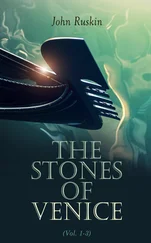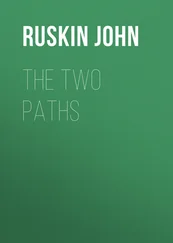John Ruskin - The Elements of Drawing, in Three Letters to Beginners
Здесь есть возможность читать онлайн «John Ruskin - The Elements of Drawing, in Three Letters to Beginners» — ознакомительный отрывок электронной книги совершенно бесплатно, а после прочтения отрывка купить полную версию. В некоторых случаях можно слушать аудио, скачать через торрент в формате fb2 и присутствует краткое содержание. Жанр: foreign_antique, foreign_home, literature_19, visual_arts, на английском языке. Описание произведения, (предисловие) а так же отзывы посетителей доступны на портале библиотеки ЛибКат.
- Название:The Elements of Drawing, in Three Letters to Beginners
- Автор:
- Жанр:
- Год:неизвестен
- ISBN:нет данных
- Рейтинг книги:4 / 5. Голосов: 1
-
Избранное:Добавить в избранное
- Отзывы:
-
Ваша оценка:
- 80
- 1
- 2
- 3
- 4
- 5
The Elements of Drawing, in Three Letters to Beginners: краткое содержание, описание и аннотация
Предлагаем к чтению аннотацию, описание, краткое содержание или предисловие (зависит от того, что написал сам автор книги «The Elements of Drawing, in Three Letters to Beginners»). Если вы не нашли необходимую информацию о книге — напишите в комментариях, мы постараемся отыскать её.
The Elements of Drawing, in Three Letters to Beginners — читать онлайн ознакомительный отрывок
Ниже представлен текст книги, разбитый по страницам. Система сохранения места последней прочитанной страницы, позволяет с удобством читать онлайн бесплатно книгу «The Elements of Drawing, in Three Letters to Beginners», без необходимости каждый раз заново искать на чём Вы остановились. Поставьте закладку, и сможете в любой момент перейти на страницу, на которой закончили чтение.
Интервал:
Закладка:
58. Thus it is always dangerous to assert anything as a rule in matters of art; yet it is useful for you to remember that, in a general way, a shadow is darker than the dark side of the thing that casts it, supposing the colors otherwise the same; that is to say, when a white object casts a shadow on a white surface, or a dark object on a dark surface: the rule will not hold if the colors are different, the shadow of a black object on a white surface being, of course, not so dark, usually, as the black thing casting it. The only way to ascertain the ultimate truth in such matters is to look for it; but, in the meantime, you will be helped by noticing that the cracks in the stone are little ravines, on one side of which the light strikes sharply, while the other is in shade. This dark side usually casts a little darker shadow at the bottom of the crack; and the general tone of the stone surface is not so bright as the light bank of the ravine. And, therefore, if you get the surface of the object of a uniform tint, more or less indicative of shade, and then scratch out a white spot or streak in it of any shape; by putting a dark touch beside this white one, you may turn it, as you choose, into either a ridge or an incision, into either a boss or a cavity. If you put the dark touch on the side of it nearest the sun, or rather, nearest the place that the light comes from, you will make it a cut or cavity; if you put it on the opposite side, you will make it a ridge or mound; and the complete success of the effect depends less on depth of shade than on the rightness of the drawing; that is to say, on the evident correspondence of the form of the shadow with the form that casts it. In drawing rocks, or wood, or anything irregularly shaped, you will gain far more by a little patience in following the forms carefully, though with slight touches, than by labored finishing of texture of surface and transparencies of shadow.
59. When you have got the whole well into shape, proceed to lay on the stains and spots with great care, quite as much as you gave to the forms. Very often, spots or bars of local color do more to express form than even the light and shade, and they are always interesting as the means by which Nature carries light into her shadows, and shade into her lights; an art of which we shall have more to say hereafter, in speaking of composition. a , in Fig. 5, is a rough sketch of a fossil sea-urchin, in which the projections of the shell are of black flint, coming through a chalky surface. These projections form dark spots in the light; and their sides, rising out of the shadow, form smaller whiter spots in the dark. You may take such scattered lights as these out with the penknife, provided you are just as careful to place them rightly as if you got them by a more laborious process.
60. When you have once got the feeling of the way in which gradation expresses roundness and projection, you may try your strength on anything natural or artificial that happens to take your fancy, provided it be not too complicated in form. I have asked you to draw a stone first, because any irregularities and failures in your shading will be less offensive to you, as being partly characteristic of the rough stone surface, than they would be in a more delicate subject; and you may as well go on drawing rounded stones of different shapes for a little while, till you find you can really shade delicately. You may then take up folds of thick white drapery, a napkin or towel thrown carelessly on the table is as good as anything, and try to express them in the same way; only now you will find that your shades must be wrought with perfect unity and tenderness, or you will lose the flow of the folds. Always remember that a little bit perfected is worth more than many scrawls; whenever you feel yourself inclined to scrawl, give up work resolutely, and do not go back to it till next day. Of course your towel or napkin must be put on something that may be locked up, so that its folds shall not be disturbed till you have finished. If you find that the folds will not look right, get a photograph of a piece of drapery (there are plenty now to be bought, taken from the sculpture of the cathedrals of Rheims, Amiens, and Chartres, which will at once educate your hand and your taste), and copy some piece of that; you will then ascertain what it is that is wanting in your studies from Nature, whether more gradation, or greater watchfulness of the disposition of the folds. Probably for some time you will find yourself failing painfully in both, for drapery is very difficult to follow in its sweeps; but do not lose courage, for the greater the difficulty, the greater the gain in the effort. If your eye is more just in measurement of form than delicate in perception of tint, a pattern on the folded surface will help you. Try whether it does or not: and if the patterned drapery confuses you, keep for a time to the simple white one; but if it helps you, continue to choose patterned stuffs (tartans and simple checkered designs are better at first than flowered ones), and even though it should confuse you, begin pretty soon to use a pattern occasionally, copying all the distortions and perspective modifications of it among the folds with scrupulous care.
61. Neither must you suppose yourself condescending in doing this. The greatest masters are always fond of drawing patterns; and the greater they are, the more pains they take to do it truly. 14Nor can there be better practice at any time, as introductory to the nobler complication of natural detail. For when you can draw the spots which follow the folds of a printed stuff, you will have some chance of following the spots which fall into the folds of the skin of a leopard as he leaps; but if you cannot draw the manufacture, assuredly you will never be able to draw the creature. So the cloudings on a piece of wood, carefully drawn, will be the best introduction to the drawing of the clouds of the sky, or the waves of the sea; and the dead leaf-patterns on a damask drapery, well rendered, will enable you to disentangle masterfully the living leaf-patterns of a thorn thicket or a violet bank.
62. Observe, however, in drawing any stuffs, or bindings of books, or other finely textured substances, do not trouble yourself, as yet, much about the wooliness or gauziness of the thing; but get it right in shade and fold, and true in pattern. We shall see, in the course of after-practice, how the penned lines may be made indicative of texture; but at present attend only to the light and shade and pattern. You will be puzzled at first by lustrous surfaces, but a little attention will show you that the expression of these depends merely on the right drawing of their light and shade, and reflections. Put a small black japanned tray on the table in front of some books; and you will see it reflects the objects beyond it as in a little black rippled pond; its own color mingling always with that of the reflected objects. Draw these reflections of the books properly, making them dark and distorted, as you will see that they are, and you will find that this gives the luster to your tray. It is not well, however, to draw polished objects in general practice; only you should do one or two in order to understand the aspect of any lustrous portion of other things, such as you cannot avoid; the gold, for instance, on the edges of books, or the shining of silk and damask, in which lies a great part of the expression of their folds. Observe also that there are very few things which are totally without luster; you will frequently find a light which puzzles you, on some apparently dull surface, to be the dim image of another object.
63. And now, as soon as you can conscientiously assure me that with the point of the pen or pencil you can lay on any form and shade you like, I give you leave to use the brush with one color,—sepia, or blue black, or mixed cobalt and blue black, or neutral tint; and this will much facilitate your study, and refresh you. But, preliminary, you must do one or two more exercises in tinting.
Читать дальшеИнтервал:
Закладка:
Похожие книги на «The Elements of Drawing, in Three Letters to Beginners»
Представляем Вашему вниманию похожие книги на «The Elements of Drawing, in Three Letters to Beginners» списком для выбора. Мы отобрали схожую по названию и смыслу литературу в надежде предоставить читателям больше вариантов отыскать новые, интересные, ещё непрочитанные произведения.
Обсуждение, отзывы о книге «The Elements of Drawing, in Three Letters to Beginners» и просто собственные мнения читателей. Оставьте ваши комментарии, напишите, что Вы думаете о произведении, его смысле или главных героях. Укажите что конкретно понравилось, а что нет, и почему Вы так считаете.












